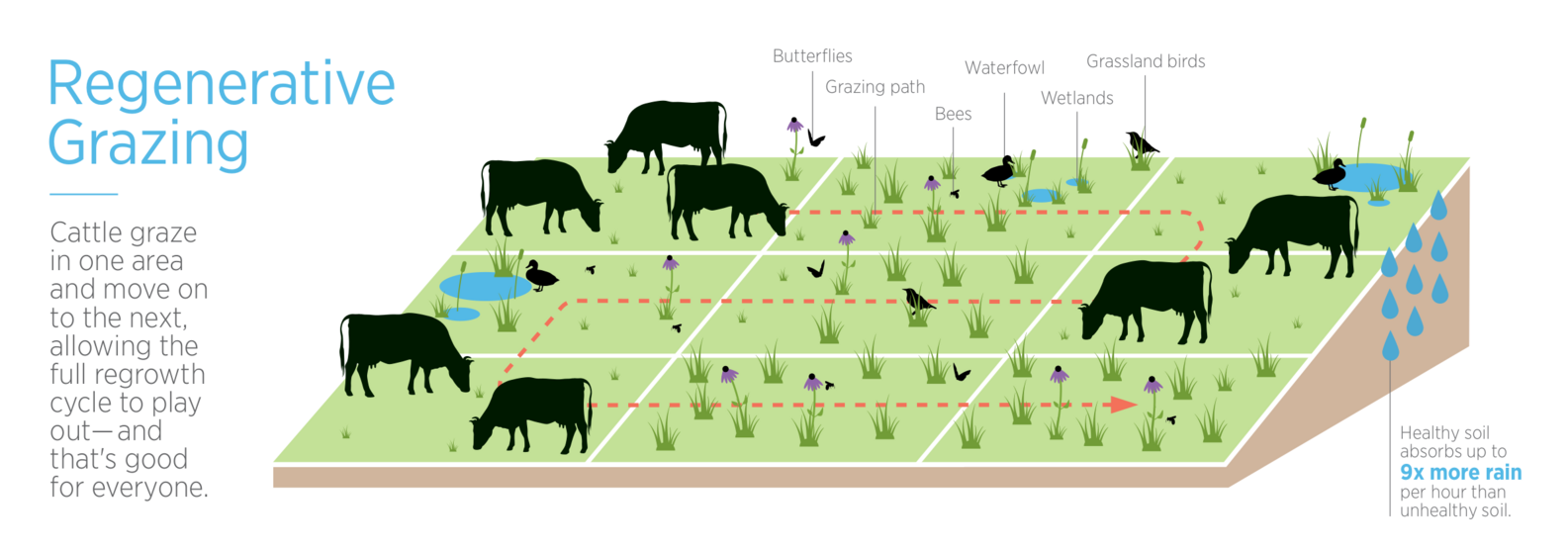Western Meadowlark
Latin: Sturnella neglecta
Audubon's habitat certification program for ranchers interested in raising and selling prairie-friendly beef.
Horned Lark. Photo: Evan Barrientos/Audubon
Research has shown an unprecedented decline in grassland birds over the past 50 years due in part to widespread development and grassland degredation. To combat this, Audubon created the Conservation Ranching Initiative. This market-based conservation approach offers incentives for good grassland stewardship through a certification label on beef products. For the first time, consumers can contribute to grassland conservation efforts by selectively purchasing beef from Audubon-certified farms and ranches.
The program is based on the concept that consumers can have a direct impact on land management through their food purchasing decisions. Grazing animals have been an integral, ecological part of grasslands for eons, and cattle can effectively mimic the role of bison in enhancing diversity across the landscape. By adopting regenerative grazing approaches, cattle grazing can actually build soil, sequester carbon, reduce water runoff, and create ecosystems that are more resilient to drought. We believe that such practices can be expanded across the landscape when conscious consumers choose beef grazed on Audubon-certified ranches, and this will significantly benefit grassland bird populations.

Because the majority of Nebraska’s grasslands are privately owned, we cannot achieve scalable outcomes unless we engage and support families who have worked the land for decades or even centuries. This program seeks to strengthen the important role of cattle ranchers as managers of grassland ecosystems.
The Audubon certification seal brings a broad market appeal that enhances demand by consumers that want options for beef that is sustainably raised and benefits wildlife habitat. The program offers brand recognition and market-based incentives for grassland stewardship, and it allows consumers to participate in conservation efforts that keep ranchers on the land and healthy grasslands on the landscape.
As Cody Grewing, Audubon Dakota’s Range Ecologist explains, “When a shopper is comparing coffee brands, and one has a ‘Rainforest Certified’ label, they may choose that product because the rainforest is important to them. People across the nation believe birds are important,” Grewing explains, “so this is how having the ACR certification label on ranchers’ beef products can be helpful not only to consumers but also to the ranchers themselves.”
Using native plants as forage increases the resilience of the grassland and can produce greater forage yields. Using native plants also increases the ability for pastures to sequester carbon, helping to mitigate the effects of climate change. Our grassland birds depend on a diversity of native plants for nesting, seeds, insects.

Help us continue our important work for Sandhill Cranes and other birds that rely on the Platte River ecosystem!
We are able to provide and protect this amazing landscape only with the help of private donations. Help us keep the trails open and the prairie thriving!
Support our work with local landowners, urban woods and prairies, and education programs in Nebraska and the Dakotas!